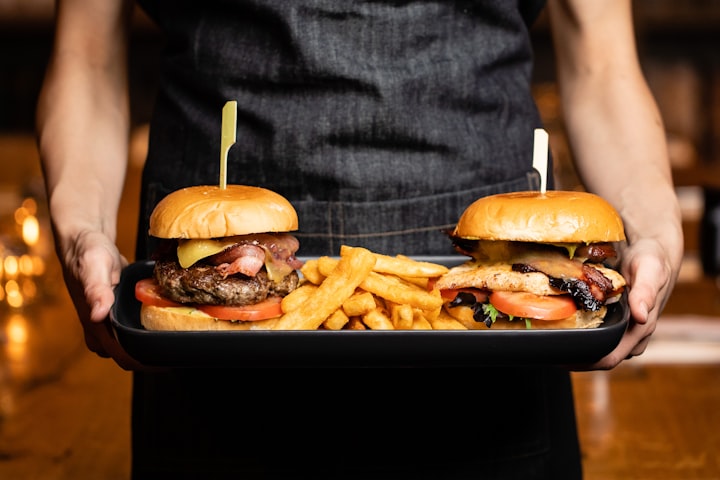Emotional Eating and Shift Work
Why and how you eat is as important as what you eat.

My partner Gary inhaled his extra-large Donair Poutine (It’s a Nova Scotia thing. Think fat and starch covered in salt. And then more fat.) Under 5 minutes. Gone.
He just got chewed out by our crusty supervisor for something inconsequential. So, we blasted Code 1 from the supervisor’s office to the Donair shop.
In the year since his divorce settled Billy made big changes. The dude was committed. He brought all his meals and healthy snacks from home, worked out every shift on his break and never ate fast food.
So how did we end up here and is that Donair sauce going to stay on his shirt for the rest of the shift?
EMOTIONAL EATING
Stress-Stress makes you hungry. Under chronic stress, the body produces high levels of the hormone cortisol. And cortisol triggers cravings for food that’s salty, sweet and fatty. First responders have a pattern of high stress, adrenalin-filled moments, followed by mundane routine. All of this, coupled with shift work, is the perfect recipe for anxiety. A lot of us subconsciously stuff our emotions with food.
THE SCIENCE
Your enteric nervous system or your “second brain” is found in your gut. Serotonin is the feel-good neurotransmitter and most of the hormone is produced in the gut, not the brain. So yeah, why, how and what we eat has a huge effect on how we feel.
The diet industry tries to sell us on the perfect diet. There isn’t one. People have individual preferences, cultural and family traditions, unique metabolisms, food sensitivities and intolerances and varying psychological coping skills. With emotional eating, and eating in general, it’s more valuable to focus on WHY you eat and HOW you eat before you decide WHAT to eat.
WHY ARE YOU EATING?
Take a minute. Is it Hunger or a Craving?
Hunger-You feel the hunger in the gut. Your stomach rumbles. Hunger comes on gradually and usually doesn’t dissipate with time. And, here’s the key point, it’s not for one specific kind of food.
Craving-The onset is sudden, overwhelming and urgent. You feel it in your head. And you know exactly what you want. Food that’s mostly sugar, salt or fat. Or all three. It’s not a coincidence that most fast food is comprised of these ingredients. They’re hyper-palatable calorie-bombs. Your taste buds go into overdrive. You also end up eating fast and mindlessly.
After we determine whether we have hunger or craving what’s the best way to eat?
HOW ARE YOU EATING
Eat to 80% Full
Hara Hachi Bu is roughly “eat until you are eight parts full” in Japanese. How do you get there? Pretty easy. Eat slow. Your gastrointestinal tract needs about 20 minutes to signal the brain that it’s full. Set a timer on your phone. Try a free app like “You Ate.” You want to feel satisfied, not stuffed. Before you eat you should be about 7 out of 10 on a perceived hunger scale. After 20 minutes it should be about 2 out of 10. If you find 20 minutes too long to start that’s OK. You will gradually increase the time with practice.
This may mean on a busy day you have multiple, smaller meals. I once had a full Thanksgiving dinner immediately followed by an hour K9 track. Not pretty.
So now what do we eat?
WHAT ARE YOU EATING?
It all can work. Low carb, high carb, low fat, high fat, keto, vegan, plant-based. But nothing will work long term if you’re hungry all the time. And being hangry does nothing for your emotional state.
Eat for Satiety-For long-term health most of us should try and focus on food that fills us up, is nutrient-dense and has the fewest calories. Satiety is when we feel full and satisfied over the long term.
Research indicates that protein and fibre (non-starchy vegetables and/or minimally-processed whole grains) suppress hunger better than starchy carbs or fat. Fat is important for health. But it's calorically dense. Shoot for a thumb-sized portion or two at each meal.
Eat to Support Your Gut Biome-We already know that the gut produces most of our serotonin. And the good news is that most of the food that makes us feel full and keeps us lean is also good for your gut health. Prebiotics supports the healthy bacteria in your gut. Food like legumes, fruit, vegetables and whole grains. Probiotics like low-sugar yogurt, kefir and pickles help grow healthy bacteria. The science on the gut-brain connection is fairly new. But the consensus is that it can help manage depression, lower your stress and cortisol and reduce anxiety.
About the Creator
Steve Gillett
Dad, husband, first responder, personal trainer, nutrition coach, resilience coach, animal lover. Professional horizontalist. Will tolerate select humans individually or in small groups.






Comments
There are no comments for this story
Be the first to respond and start the conversation.